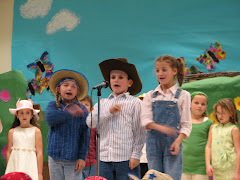Education
Chapman University College, Walnut Creek
In progress: M.A. Teaching, Multiple Subject Credential Program
Expected completion of credential program: July 2008
California State University, Fresno
B.S. Recreation and Leisure Studies, Therapeutic Recreation option
California Polytechnic University, San Luis Obispo
Recreation and Leisure Studies, Therapeutic Recreation option
Certifications & Examinations
California Emergency 30-day Substitute Teaching Permit
CBEST: Passed
CSET: Passed
RICA: Scheduled for April 12, 2008
Experience
Substitute Teacher:
Brentwood, Byron & Knightsen School Districts, 2007 to present
Provide per diem classroom coverage to current district teachers. Experience in Elementary and Middle School classrooms. Open Court trained.
Classroom Volunteer:
John Muir Elementary School 2003-2005; Pioneer Elementary School 2005-present
Provide teachers with classroom assistance as needed. Assistance included but was not limited to benchmark testing, fluency testing, field trips, and facilitating reading, vocabulary, and math groups.
Financial Services Professional:
New York Life Insurance Company, 2006 to 2007
Explain basic financial concepts to clients, identify areas of need and develop a plan of action. Follow client progress through the underwriting process. Presented client workshops such as Building Your Financial House, Long Term Care Insurance, and Raising FinanciallyResponsible Children.
Recreation Therapy Consultant:
Geriatric Healthcare Consultants, Inc., 2002 to 2005; Self-employed, 1998 to 2002
Provided regular evaluation and training to Activity Directors in various levels of care facilities to ensure compliance with state and federal regulations and to provide appropriate programming for patients based on their functional level as well as cognitive, social, emotional, physical and spiritual needs. Provide written report of findings.
Director of Education:
Northern California Council of Activity Coordinators, 1999-2001
Assist in the planning of three annual educational events. Arrange speakers, obtain continuing education unit approval, evaluate session educational opportunities based on participant feedback. Assist in development of the Activity Director Certification courses provided by the organization. Speak at conferences as requested.
Director of Therapeutic Recreation:
Diamond Ridge Healthcare Center 1996-1997; Baywood Healthcare Center 1995-1196
Evaluate patients and develop a plan of care for each. Develop programming to meet the needs of residents, helping them to achieve their treatment goals. Provide documentation of programming participation. Supervise Activity Department Staff.
















